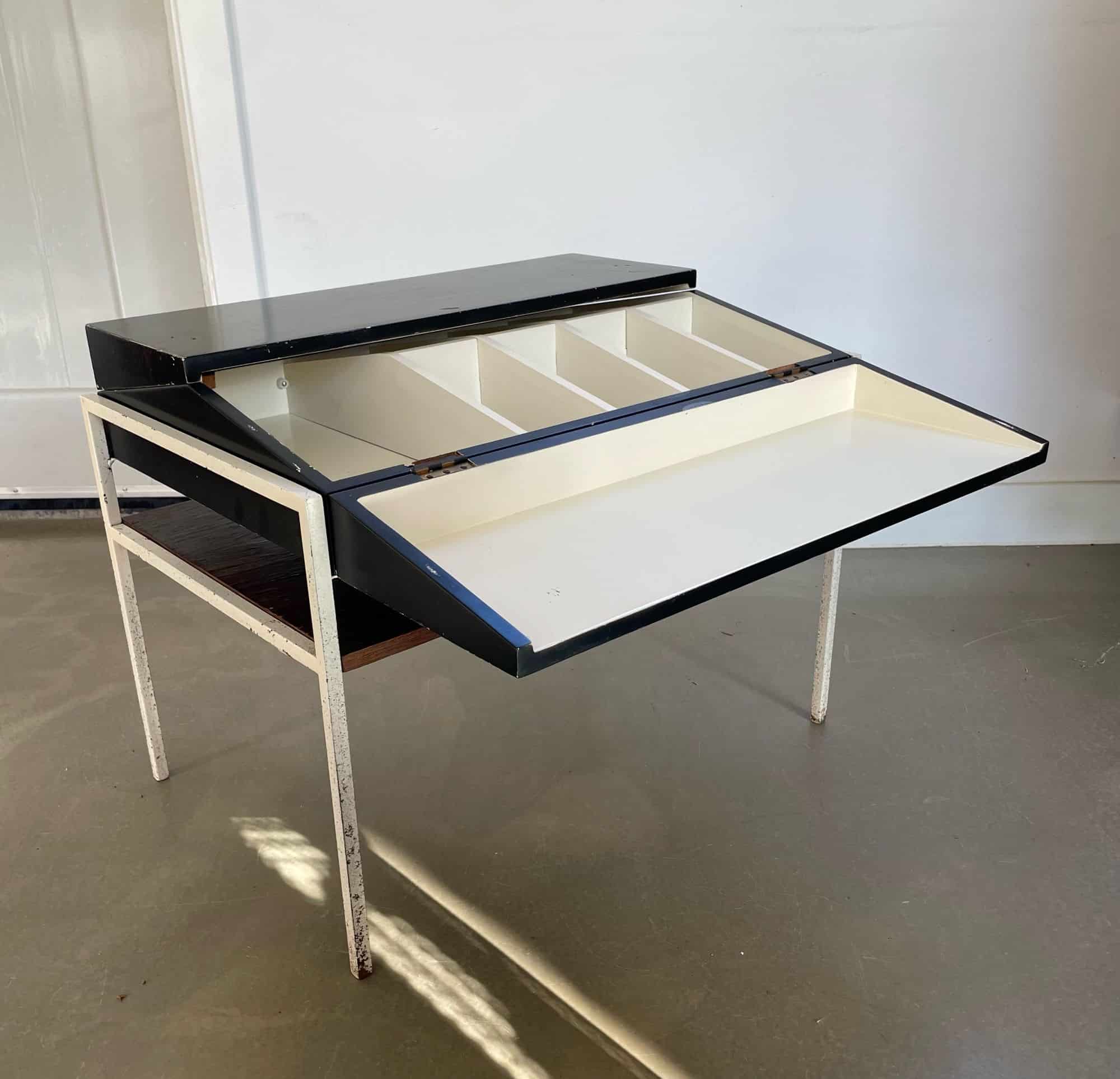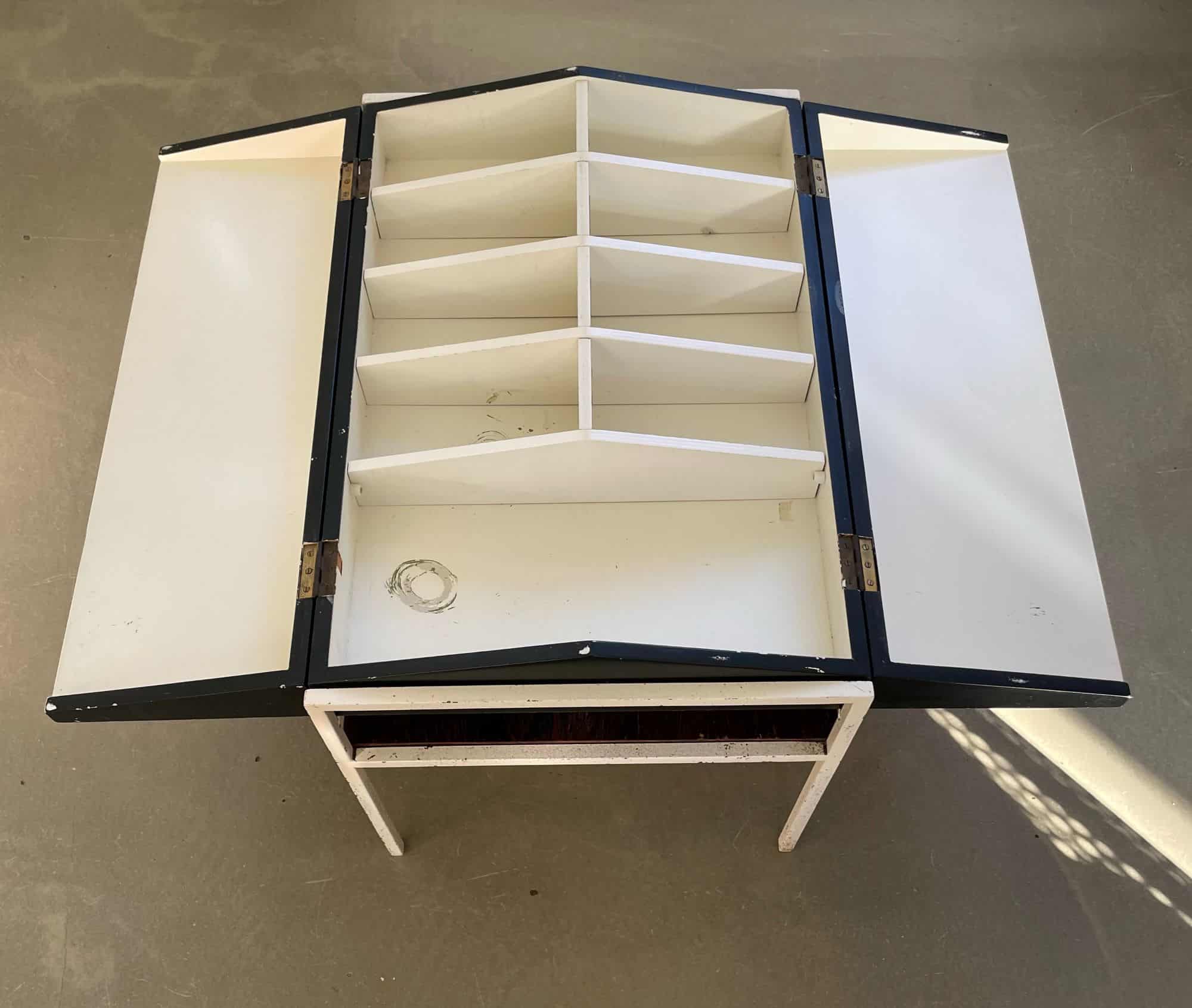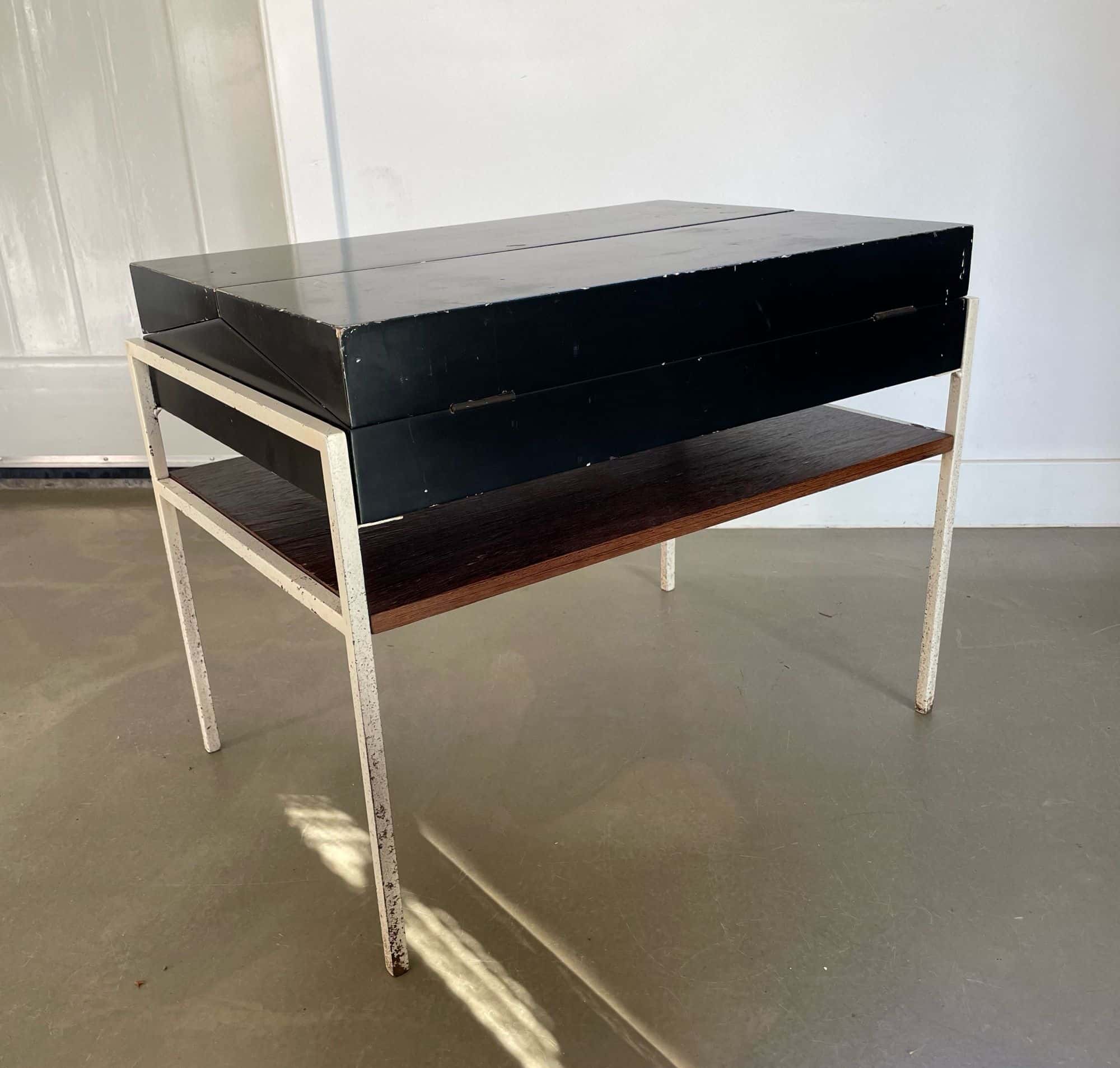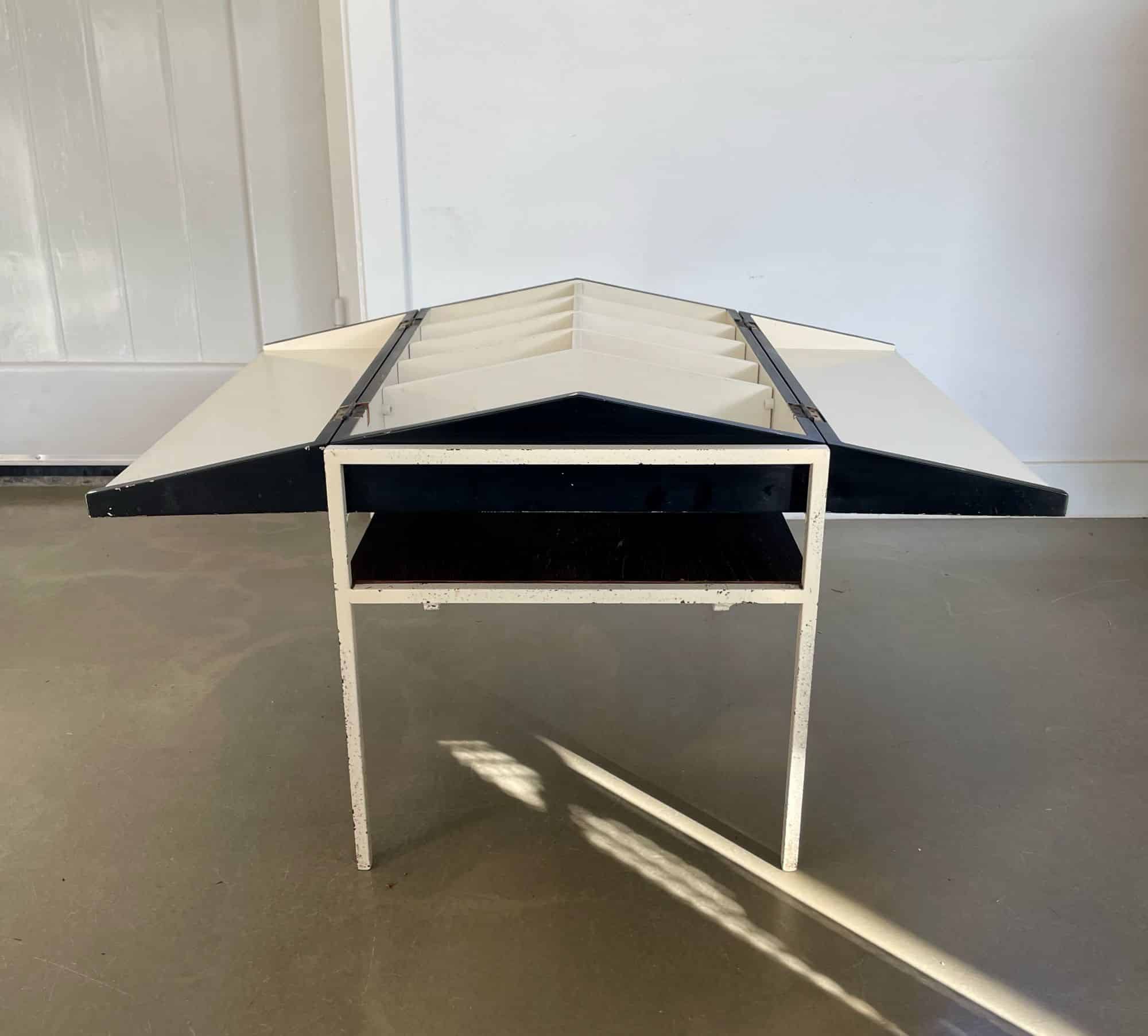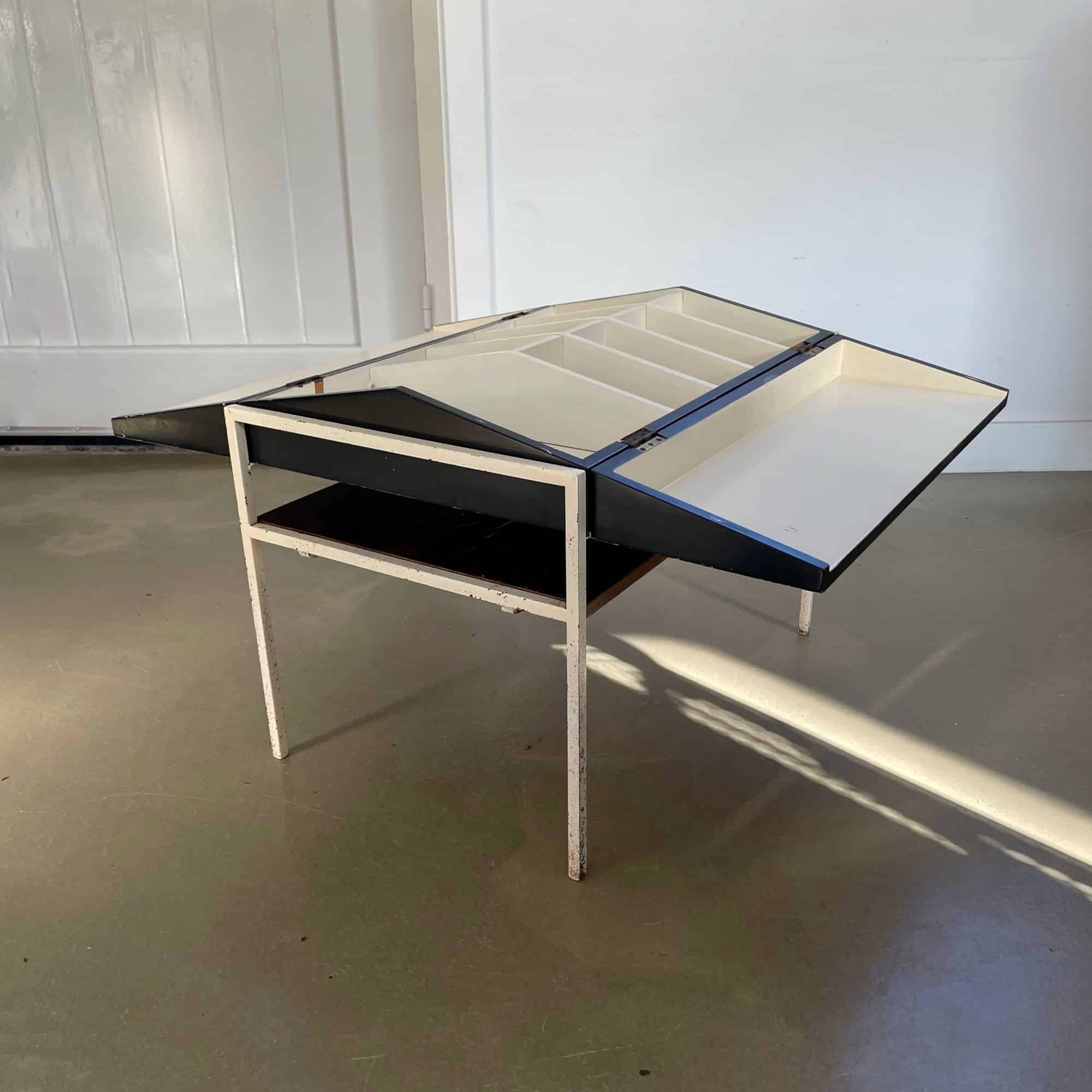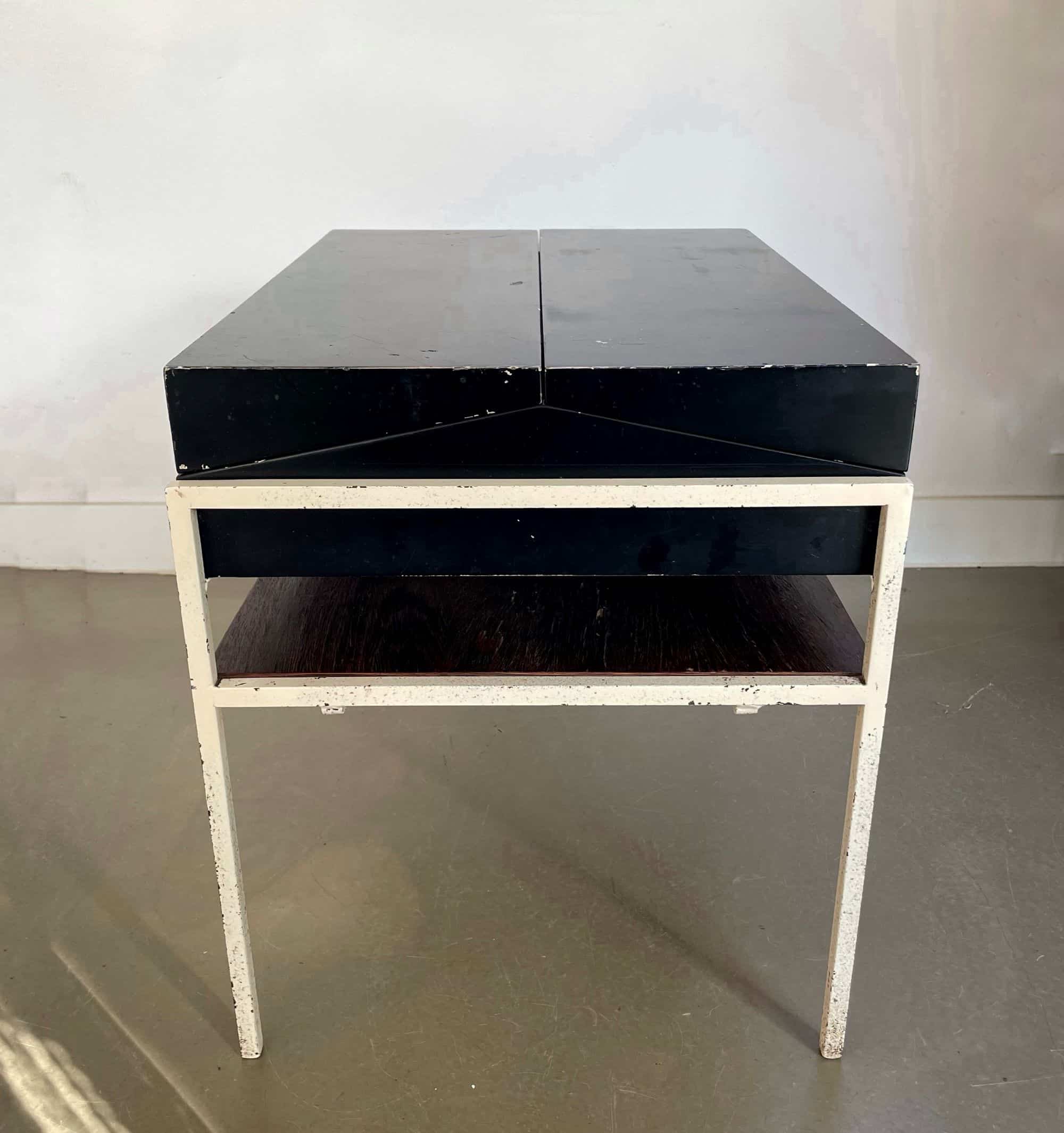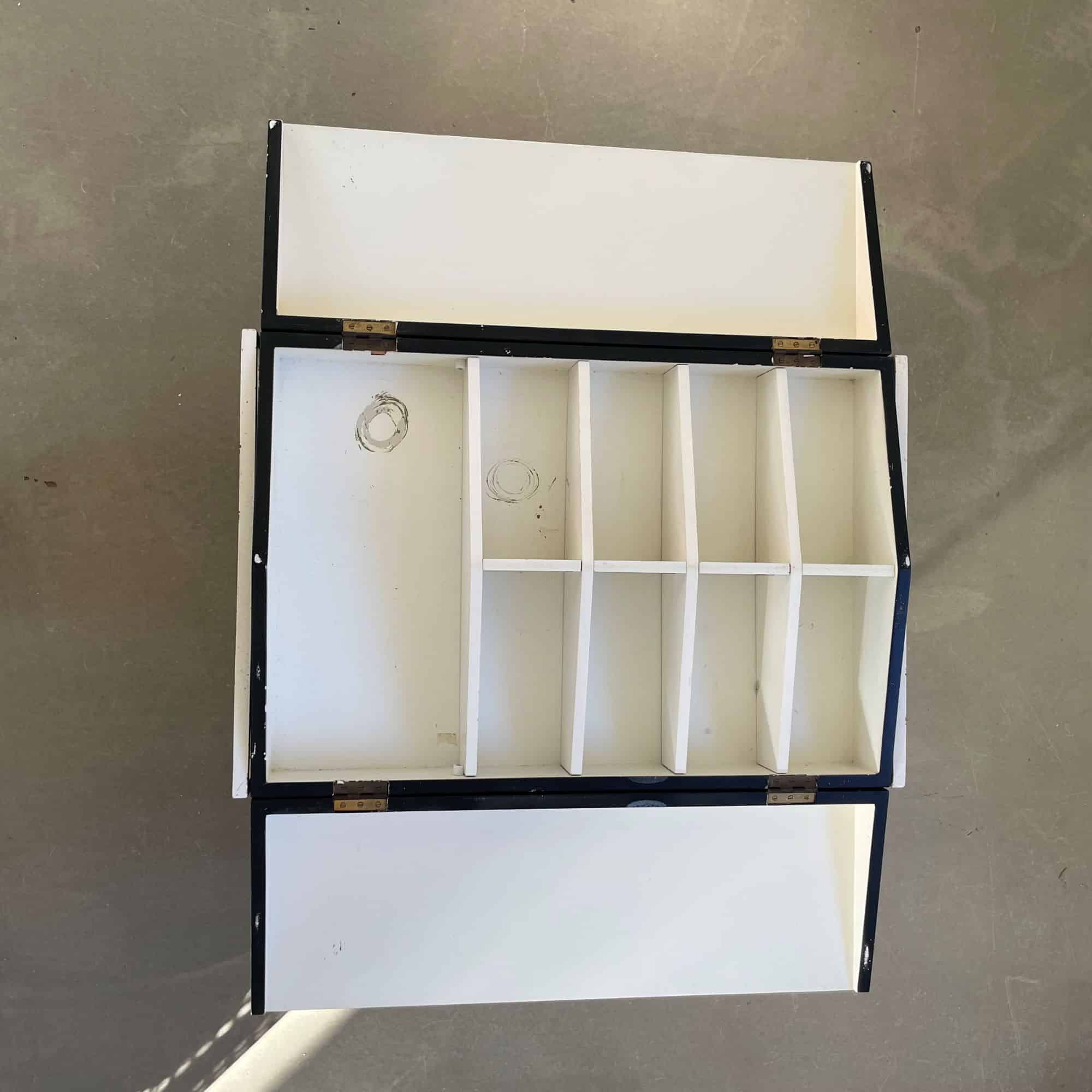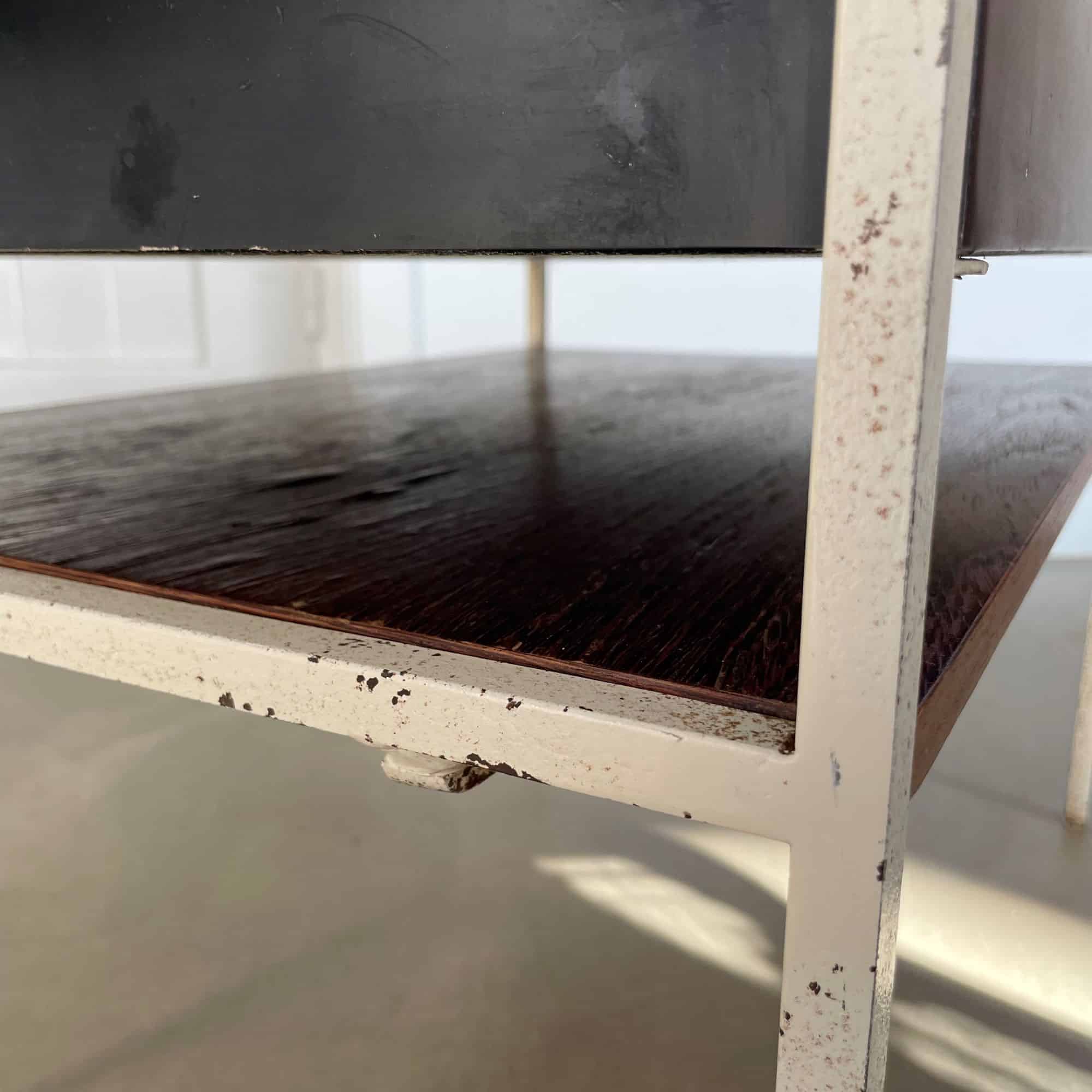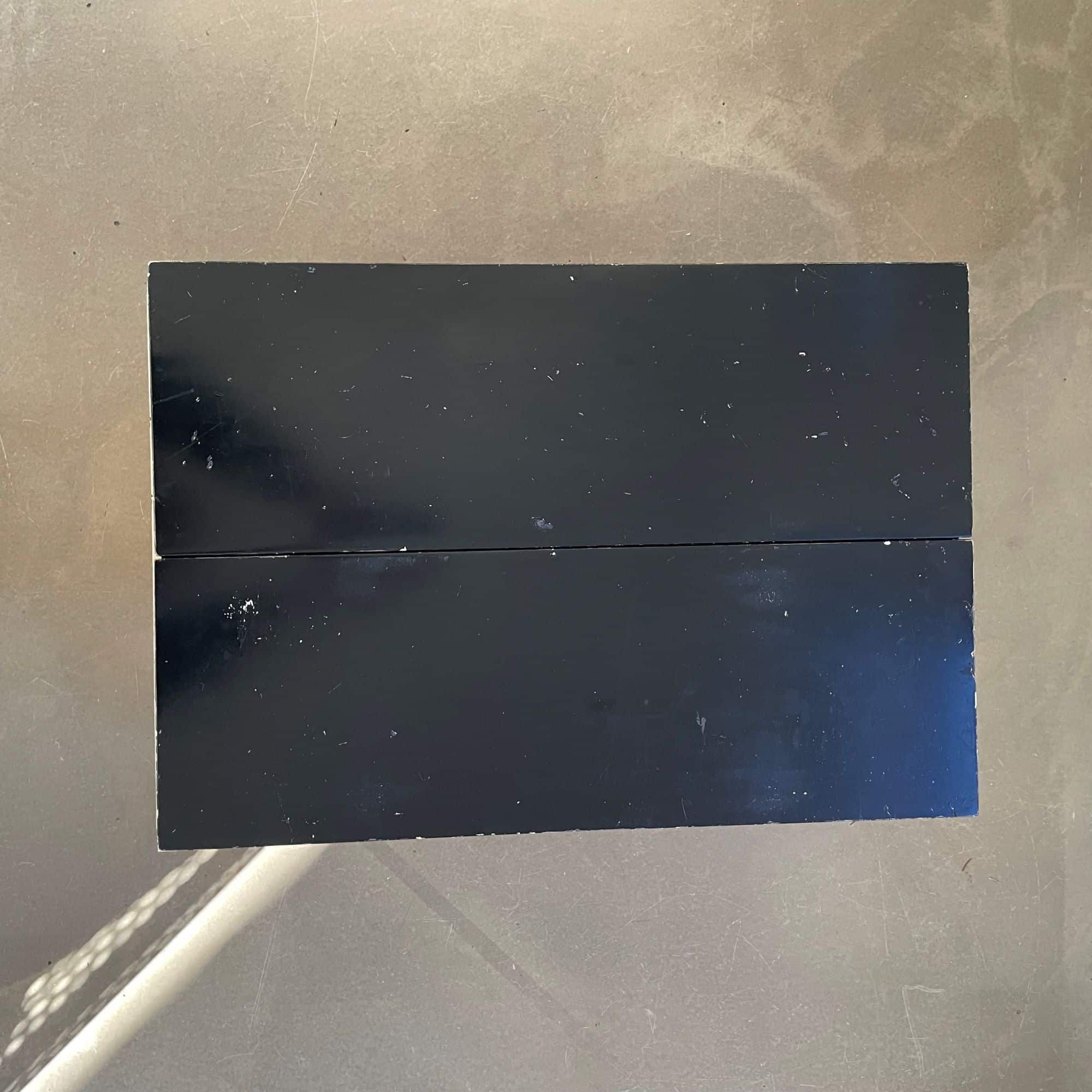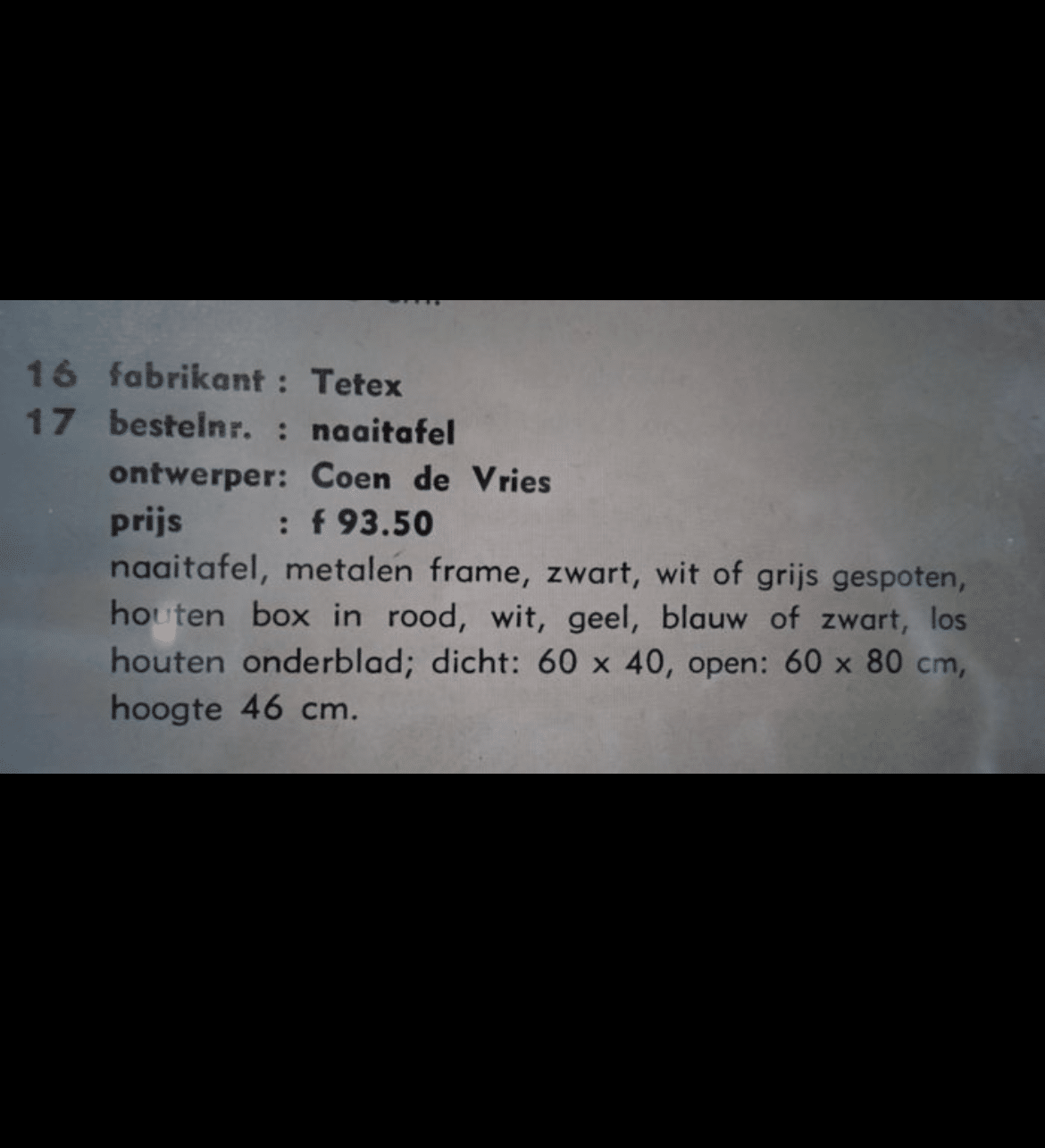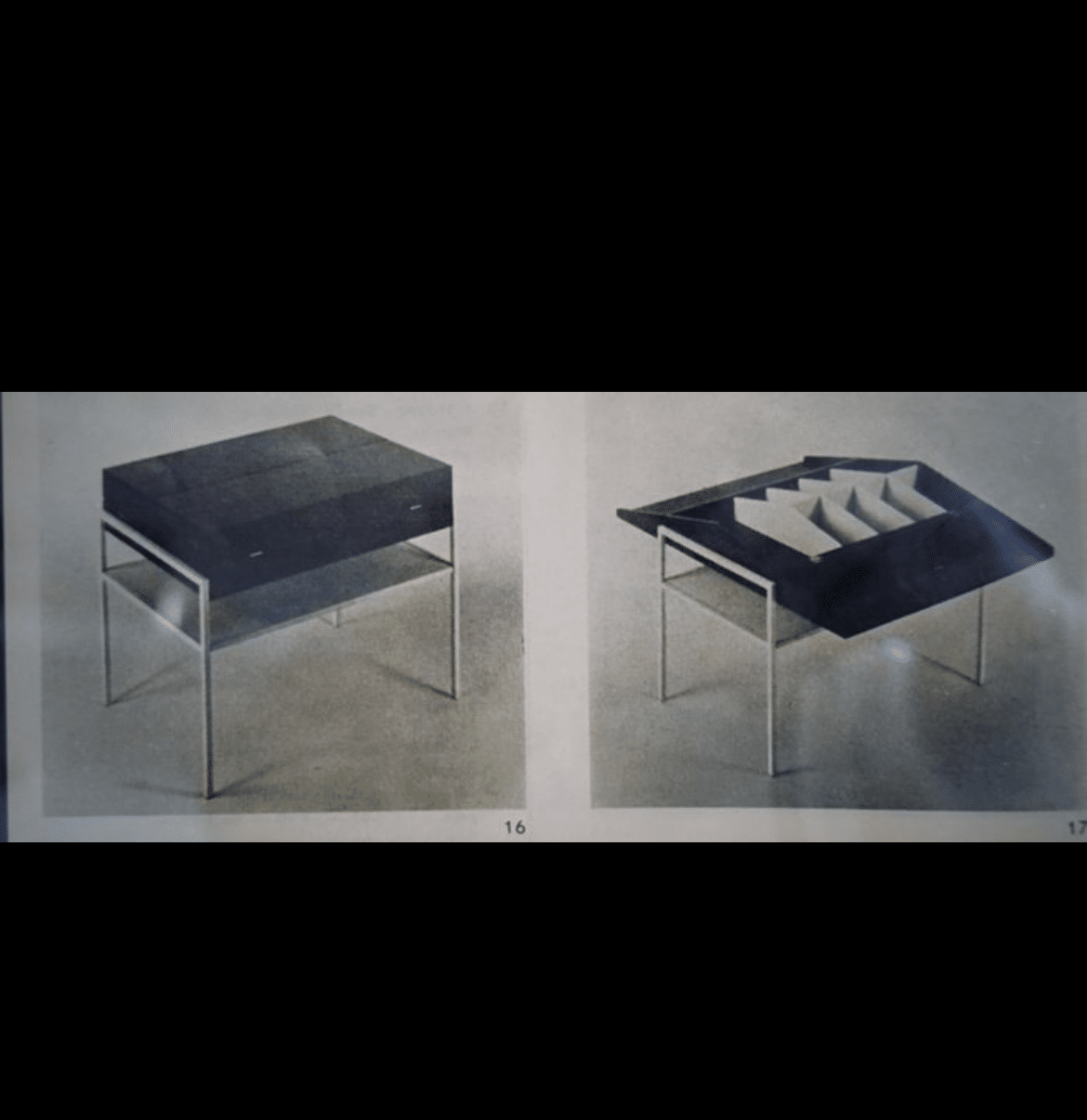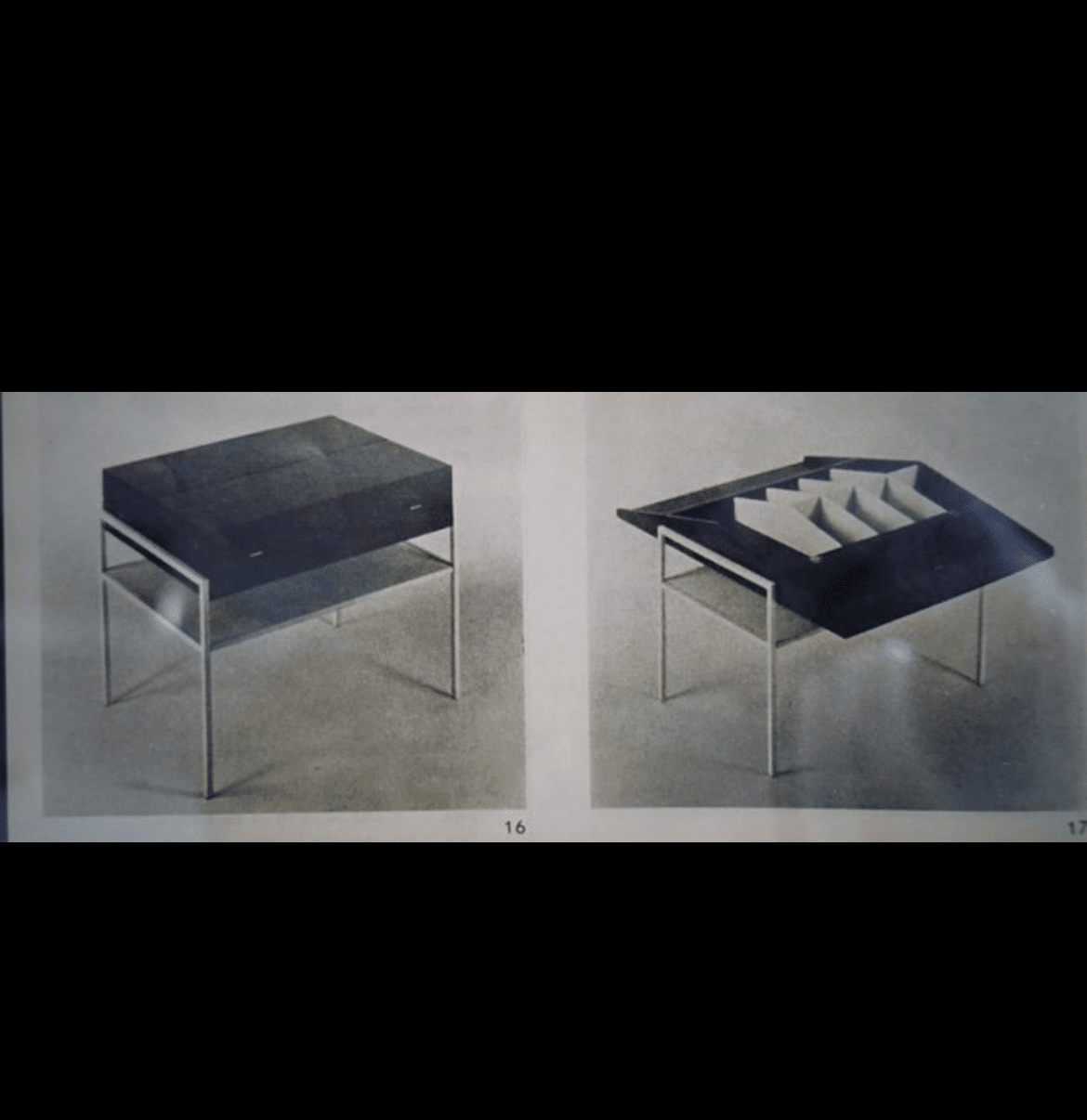Modernist sewing box by Coen de Vries for Tetex, The Netherlands, 1950s
Price on request
A lovely sewing box designed by Coen de Vries, manufactured in the Netherlands around 1950.
This mid-century piece has a square, off-white metal base and holds a rectangular black (outside) and white (inside) wooden sewing box. When opened, it reveals plenty of storage compartments for many different small items and sewing material. Underneath there is a wooden shelf for additional items.
It remains in good, vintage condition with wear consistent with age and use, preserving a beautiful patina. See all images for a good impression.
Size:
H 46,5 cm
W 60 cm
D 40 cm
About the designer
Dutch industrial designer Coen de Vries was born in The Hague in 1918. From 1940 until 1946, he studied interior design at the Royal Academy of Fine Arts in The Hague under Dutch designer Cor Alons (1892-1967).
During this time, he also studied on exchange at the Institute of Applied Art (IvKNO) in Amsterdam under visionary architect Mart Stam (1899-1986) and functionalist architect-designer Johan Niegeman (1902-1977). After graduating in 1946, de Vries became a member of the Amsterdam group known as “De 8” from 1947 until 1949. Founded in 1927, De 8 was an architectural avant-garde association that consisted initially of rationalist architects who were educated in the spirit of the Amsterdam School, such as Benjamin Merkelbach (1901-1961), Charles Karsten (1904-1979), and Han Groenewegen (1888-1980).
Over the course of his career de Vries worked as an industrial designer for various manufacturers including Bruynzeel Cabinets, Devo, Eeka Furniture, Everest, Fröscher, Gispen, and Pilastro. De Vries’ work – which spans tables, desks, sofas, and accessories – includes a Model LV1 Coat Rack for Pilastro (1953), a desk in birch with an ebonized x-base for Devo (1954), the Delta Series for Lips (1959), the No. 1451 Chair for Gispen (1967).
Notably, from 1966 to 1972, de Vries was a member of the Council for the Arts, a national advisory board to the Minister of Culture, and from 1977 to 1980 he was a member of the Committee on Architecture of the Amsterdam Arts Council.
